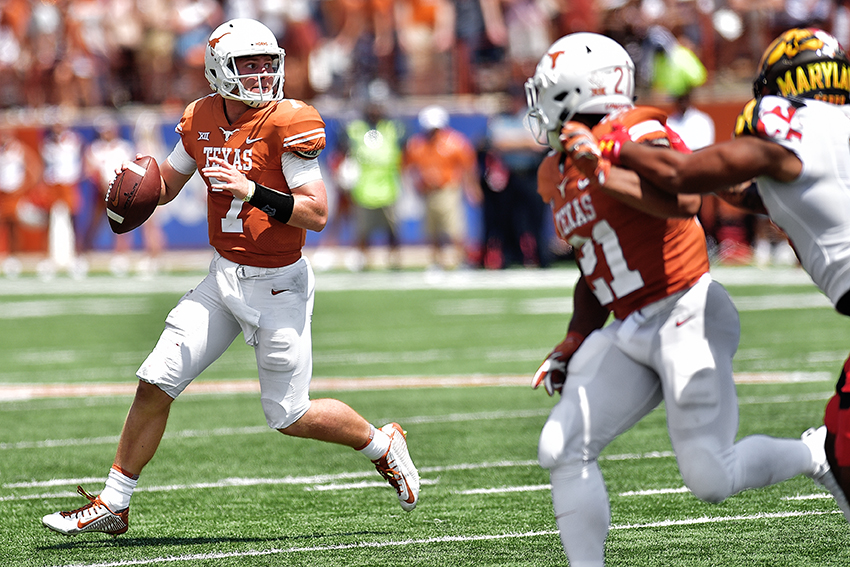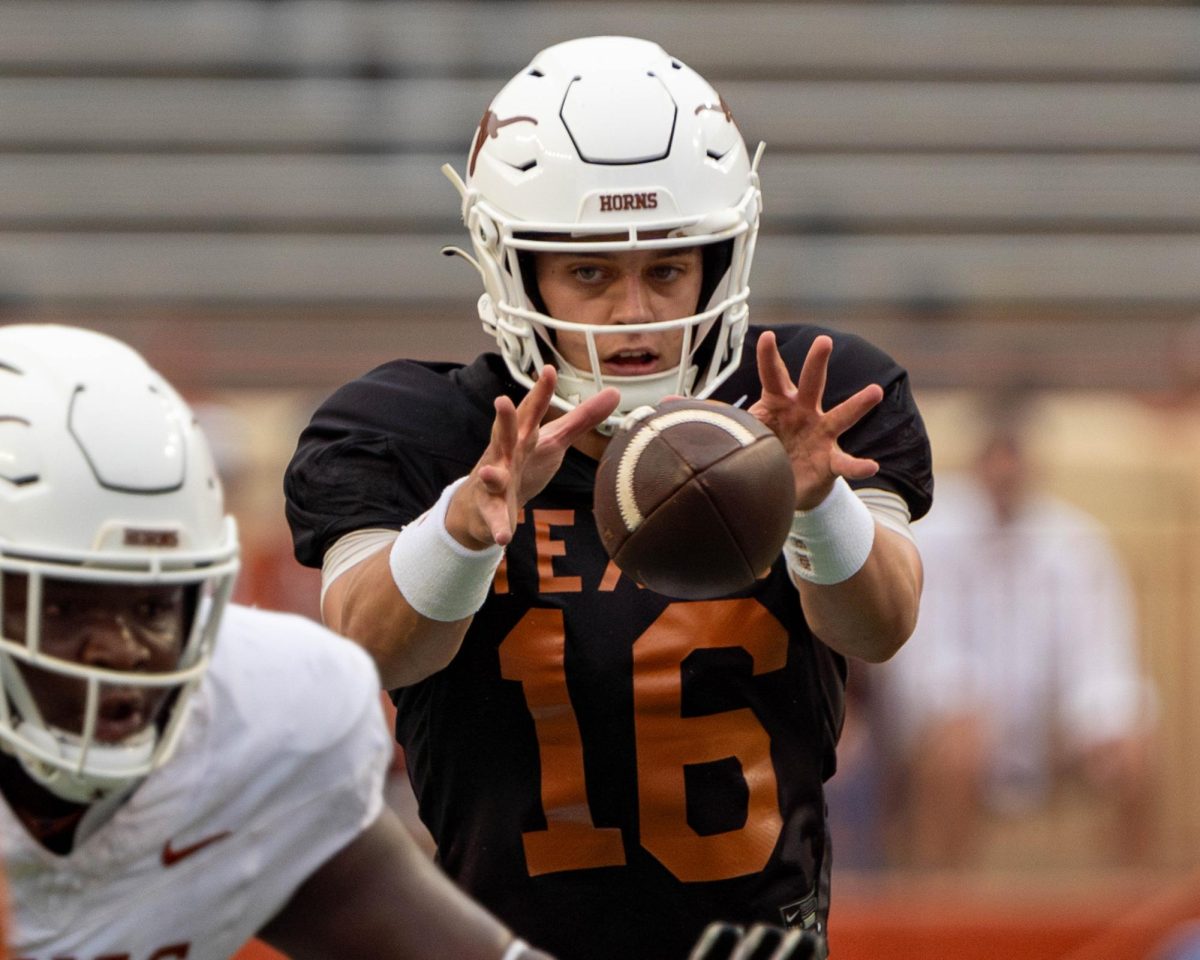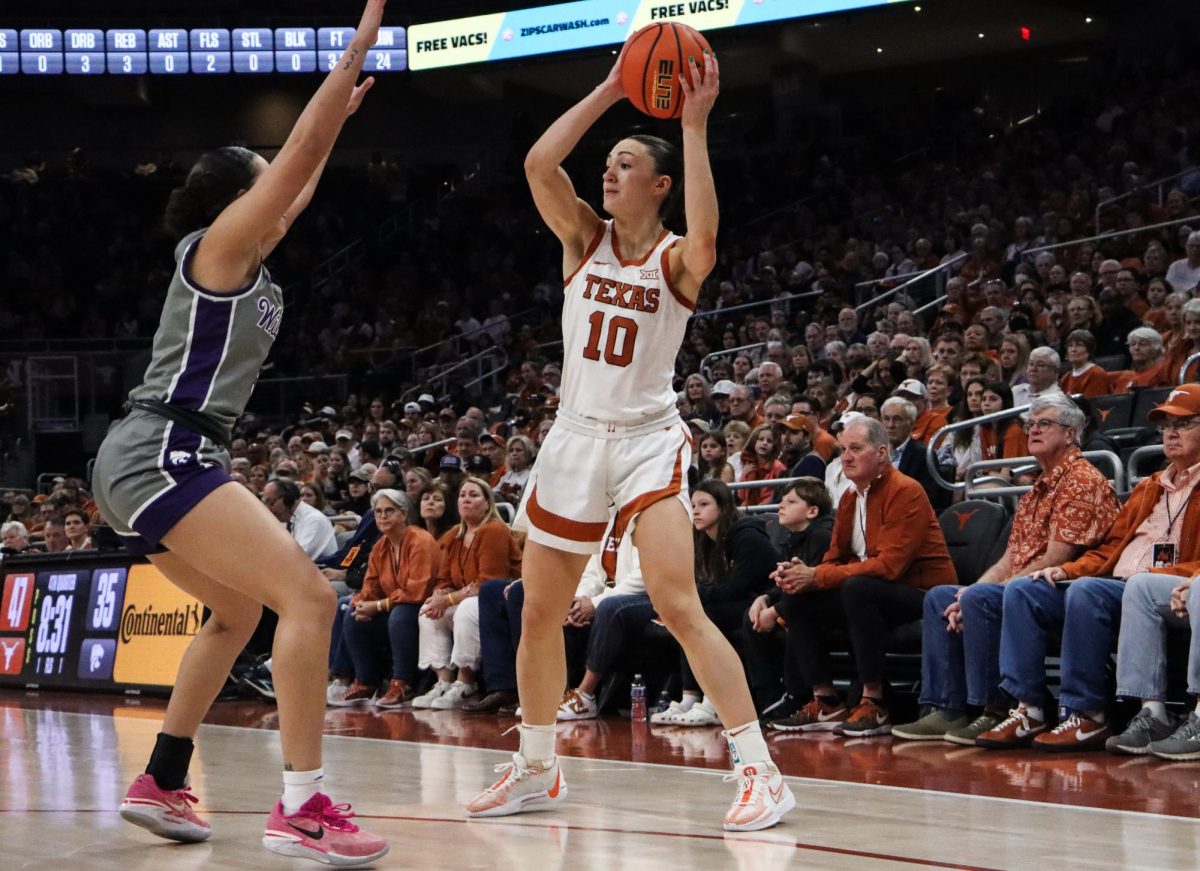Through the season’s first four weeks, Texas hasn’t looked like a prototypical Big 12 team. The Longhorns won’t throw for miles through the air, and they don’t want to get into a high-scoring shootout. Aside from Texas’ 51-41 loss to Maryland in Week One, it looks increasingly clear that the backbone of this Longhorn team will be its defense, supplemented by a downhill rushing attack.
It may be a bit premature to say the Longhorns’ opening-week loss was an aberration, but there has been a distinct difference between the Texas team we saw on Sept. 2 and the one we see now. Since losing to the Terrapins, the burnt orange have given up 31 points in three games, a rate that would rank No. 4 in the NCAA in scoring defense. By comparison, the Longhorns gave up a tick over 30 points per game over the course of 2016.
Texas’ impressive defensive has been bolstered significantly by its improved pass rush, one that harassed Heisman candidate Sam Darnold for much of Texas’ defeat against USC on Sept. 16. The pressure created by the Longhorns’ front-line has been a major cause of Texas’ eight forced turnovers on the year, including the team’s seven interceptions.
“You get good pressure on the quarterback and good things are going to happen on the back end,” head coach Tom Herman said at Monday’s press conference.
Herman has often pointed to the Longhorns’ loss to Maryland as a central catalyst for the defense’s improvement. In Week One, Texas surrendered 482 total yards on top of 51 points, including 263 yards on the ground. The burnt orange were unable to contain both starting quarterback Tyrell Pigrome, or his backup Kasim Hill, who entered the game early in the fourth quarter. But since Week One, the Longhorns have rebounded, looking far better than the hapless unit that took the field against the Terrapins.
“They learned a very costly but valuable lesson in that Maryland game,” Herman said following Texas’ win over Iowa State. “You can’t play great defense if you’re evaluating and you’re thinking and you’re gauging or tip-toeing. You have to stick your foot in the ground and go and trust that the other 10 guys are going to be there right behind you. Our defense for the last three weeks has been doing that.”
While Texas’ defense has impressed in three consecutive weeks, its offensive counterpart has failed to hold its end of the bargain. Save for the 56-0 rout of an overmatched San Jose State team, Texas’ offense has averaged just two offensive touchdowns per game.
For a team projected to build upon offensive success in 2016, the Longhorn attack has looked stuck in mud, unable to generate explosive plays either in the backfield or in the passing game. Sophomore quarterback Shane Buechele has been limited by injury, and his backup freshman Sam Ehlinger proved inconsistent in his two cracks at the starting job. At this point, both lack the dynamism needed to rack up points in Herman’s offense.
Herman dismissed the notion on Monday, telling the media his quarterbacks don’t need to generate big plays on the ground, but rather, “make a few yards when the yards present themselves.” But on this current Longhorn roster, Texas’ quarterbacks may be the lone source of big plays. Junior Chris Warren III hasn’t had a breakout season at running back, and Texas hasn’t schemed a way to effectively target star wideout Collin Johnson.
Texas can survive without any explosive playmakers on offense. But don’t expect the wins to come pretty. For the Longhorns to have success in 2017, they must rely on their fearsome defense and a methodical, efficient offense.















